-
Courses

Courses
Choosing a course is one of the most important decisions you'll ever make! View our courses and see what our students and lecturers have to say about the courses you are interested in at the links below.
-
University Life

University Life
Each year more than 4,000 choose University of Galway as their University of choice. Find out what life at University of Galway is all about here.
-
About University of Galway

About University of Galway
Since 1845, University of Galway has been sharing the highest quality teaching and research with Ireland and the world. Find out what makes our University so special – from our distinguished history to the latest news and campus developments.
-
Colleges & Schools

Colleges & Schools
University of Galway has earned international recognition as a research-led university with a commitment to top quality teaching across a range of key areas of expertise.
-
Research & Innovation

Research & Innovation
University of Galway’s vibrant research community take on some of the most pressing challenges of our times.
-
Business & Industry

Guiding Breakthrough Research at University of Galway
We explore and facilitate commercial opportunities for the research community at University of Galway, as well as facilitating industry partnership.
-
Alumni & Friends

Alumni & Friends
There are 128,000 University of Galway alumni worldwide. Stay connected to your alumni community! Join our social networks and update your details online.
-
Community Engagement

Community Engagement
At University of Galway, we believe that the best learning takes place when you apply what you learn in a real world context. That's why many of our courses include work placements or community projects.
Current Projects
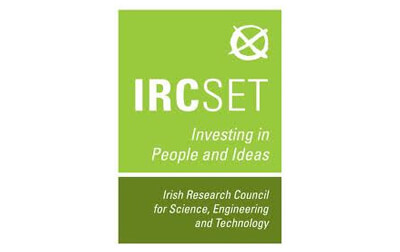
IRCSET ERA-Chemistry Open Initiative Project
Development of Accurate Chemical Kinetic MechanismsThis project is funded by IRCSET under the ERA-Chemistry Open Initiative Call 2010. It is concerned with the development of accurate chemical kinetic mechanisms of a wide selection of fuels. The kinetic mechanisms are developed and optimised using experimental data (a) produced in-house and (b) obtained from the literature.
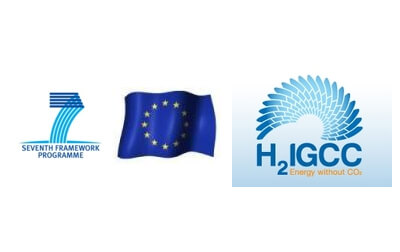
European Union ( EU FP7-ENERGY-2008-TREN-1)
Low Emission Gas Turbine Technology for Hydrogen-Rich Syngas
This project is co-funded by the European Union's 7th Framework Programme for Research and Development and based on the initiative outlined in the European Turbine Network's (ETN) Position Paper on Gas Turbine Fuel Flexibility ( http://www.h2-igcc.eu/).
The H2-IGCC project kicked off with 24 partners from 10 countries with a total budget of €17.8 M. Successful dissemination and implementation of the project results will be an important step towards opening up the market for Integrated Gasification Combined Cycle (IGCC) with Carbon Capture and Storage (CCS) by 2020, by increasing gas turbine efficiency and fuel flexibility.
The Combustion Chemistry Centre at NUI Galway will provide ignition delay times for undiluted syngas mixtures measured using a rapid compression machine and a high pressure shock tube. Data will be generated at a wide range of temperatures and pressures. This method has already shown its capabilities in studies with various hydrocarbon fuel mixtures. Rapid compression machine experiments complement shock tube studies by extending to lower temperature ranges that are relevant to air preheat temperatures in gas turbines.
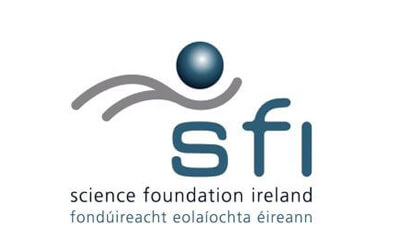
SFI (PI) in Energy
Combustion Chemistry for Energy Efficient Technologies and Sustainable EnergyProject 1
The future generation of transport fuels will be oxygenated and almost carbon neutral, produced from biomass and other natural sources. These fuels are cheaper to produce and are known to produce lower emissions. However, fuel structures must be well understood in order to make recommendations to improve the performance in engines.
The focus of this project is to provide ignition delay times and temporal evolution profiles of radical and stable soot-forming hydrocarbon species, with the ultimate goal to making recommendations that will direct the production of cleaner, lower emission fuels.
Project 2
Syngas is a mixture of carbon monoxide, carbon dioxide and hydrogen. It is produced through a variety of industrial processes like the gasification of coal, waste to energy gasification, and steam reforming of natural gas. Currently gas turbine technology is optimised for natural gas and further research is required if syngas is to be used as a reliable fuel for gas turbine. Investigations of the combustion of syngas are of particular interest to European gas turbine manufacturers to ensure fuel flexibility, efficiency, safety and reliability.
This project will generate ignition delay data for syngas mixtures measured in a rapid compression machine at low and intermediate temperatures and a range of pressures. The knowledge obtained will enhance the understanding of the combustion of syngas in gas turbines and will be used to make recommendations on the combustion properties of syngas and combustor design of gas turbines.

Rolls Royce Canada Limited
Emission Reduction: Natural Gas/Gas Turbines and EnginesOur study in collaboration with Rolls–Royce Canada Limited and the Texas A&M University and more recently Georgia Institute of Technology has focused on an increased understanding of the oxidation of natural gas under gas-turbine conditions.
As regulations are imposing tighter limits on emissions, the use of dry, low-emission industrial gas turbines using lean premix technology is being favoured. The range of compositions that lean premix technology can accommodate depends on turbine design. For example, the ignition time of the evolving fuel-air mixture inside the pre-mixer, from the point of injection to the combustion zone, needs to be much longer than the residence time to prevent hardware damage. Fundamental measurements of the ignition time of methane/propane mixtures, particularly at pressures and concentrations of interest to gas turbines, are therefore important for the design of efficient engines.
Experiments performed in the NUI Galway rapid compression machine have extended the range of study for natural gas to lower temperatures and higher pressures than ever previously explored. A detailed kinetic model was developed and used to simulate these data with good agreement observed. The fact that Rolls Royce chose to cross the Atlantic and make use of our facilities speaks volumes; the success of this project is due to the unique resources of the C3 both in having a rapid compression machine and a complementary high pressure shock tube together with the capability to perform detailed computer modelling.
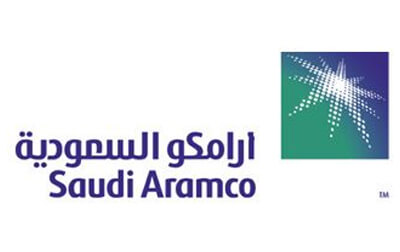
Saudi Arabian Oil Company
Kinetic Development and Experimental Validation of a Large Hydrocarbon Fuel MechanismThe Combustion Chemistry Centre was recently awarded major funding by Saudi-Aramco, one of the biggest oil companies in the world, for projects studying how large hydrocarbon fuels burn in internal combustion engines and other combustors.
Dr Curran’s research in the Combustion Chemistry Centre (C³) is concerned with the study of the chemistry of combustion, its application to the design of energy-efficient engines and gas turbines, and the impact of their use on both toxic and greenhouse gas emissions.
One part of the project is concerned with the study of large hydrocarbon molecules and how various molecular variations influence the combustion efficiency and toxic hydrocarbon and soot emission formation.
This project will also enhance and extends NUI Galway’s collaboration with Lawrence Livermore National Laboratory in California and the University of Nancy in France, and its results will be used to identify fuel sources most suitable for the production of cleaner-burning fuels for transport and electricity generation. The C³’s rapid compression machine and complementary high pressure shock tube allow experiments to be performed in a more controlled environment compared to engines.
Dr Curran’s second research project is concerned with developing accurate computer models that describe the oxidation of hydrocarbons under real-world conditions to aid the design of cleaner, more efficient combustors. Dr Curran says that: “The vision of this proposal is to develop technologies that enable safe and reliable combustor operation together with efficiency and emission levels that meet current and future emissions regulations, which are becoming ever more challenging for the combustion community.”
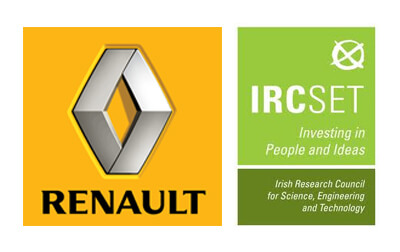
Renault and IRCSET
Shock Tube Ignition for n-Heptane / a -Methyl Naphthalene mixtures with Exhaust Gas RecirculationExhaust gas recirculation (EGR) is a technique that leads to the reduction of emissions of nitrogen oxide (NOx) in transport engines by recirculating a portion of an engine's exhaust gas back to the engine cylinders. In a petrol engine this inert exhaust gas displaces the amount of fuel in the cylinder, thereby reducing the combustion temperature while maintaining the same pressure against the piston. In a diesel engine, the exhaust gas replaces some of the excess oxygen in the pre-combustion mixture which would otherwise enhance stimulate the formation of NOx. The formation of NOx is increased at high temperatures; thus by reducing the combustion temperature in the combustion chamber ERG reduces NOx emissions.
This project is concerned with the effects of exhaust gas recirculation on the oxidation of 70% n-heptane / 30% a -methyl naphtalene fuel blends. It investigates the oxidation of pure fuel component mixtures and generates experimental data using concentrations of ERG from 0-60% of the total mixture composition.
SFI-Research Frontiers Programme
Synthetic Oxygenated Fuels for Improved Combustion and Reduced Pollutant EmissionsTypical biodiesel fuels consist of mixtures of saturated and unsaturated methyl esters containing carbon chains with twelve or more atoms in length. The chemistry of the combustion of biodiesel fuel is however not very well understood.
This project is concerned with studying the reactivity of compounds with the essential chemical structures of biodiesel fuel such as methyl and ethyl esters in our shock tube and rapid compression machine over the temperature and pressure ranges pertinent to operating diesel engines. Ignition times are measured as a function of temperature, pressure, and fuel/"air" ratio. The data obtained leads to an increased understanding of how these fuels are oxidised in engines (how fast, what toxic emissions are formed, etc.). The understanding gained will be used in future engine design, leading to increased operating efficiency and a reduction of harmful hydrocarbon and NOx emissions.
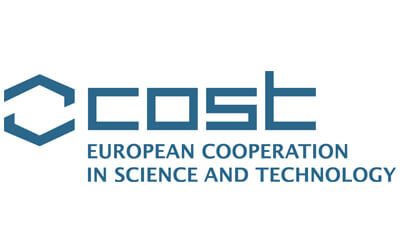
COST Action CM0901
Detailed Chemical Kinetic Models for Cleaner CombustionCOST is an intergovernmental framework for European Cooperation in Science and Technology, allowing the coordination of nationally-funded research on a European level. COST contributes to reducing the fragmentation in European research investments and opening the European Research Area to cooperation worldwide.
The Combustion Chemistry Centre is centrally involved in this Action; it is present on the board of the Management Committee and is providing leadership of the second workgroup on creation of detailed chemical kinetic mechanisms or the formation and consumption of oxygenated pollutants.
The main objective of this project is to develop cleaner and more efficient combustion processes through the design and implementation of better defined and more accurate detailed chemical kinetic models. The key objective is to promote at EU level the development of cleaner and more efficient combustion technologies through the implementation of theoretically grounded and more accurate chemical models. This will be achieved by gathering experts from 21 European countries and working on the theory and computation of elementary reactions, on detailed kinetic modelling in a variety of combustion environments, on experimental measurements in reactors, rapid compression machines, shock tubes and burners and on the assemblage, as well, of technologically advanced industrial devices. This is motivated by the fact that the current models which have been developed for the combustion of hydrocarbons and oxygenated compounds present in natural gas, kerosene, gasoline, diesel and bio-fuels do a reasonable job in predicting auto-ignition and flame propagation parameters, and the formation of the main regulated pollutants. However their success rate deteriorates sharply in the prediction of the formation of minor products (alkenes, dienes, aromatics, aldehydes) and soot nano-particles, which have a deleterious impact on both the environment and on human health.
C3 members were instrumental in the setting up of a new COST Action entitled “Detailed Chemical Kinetic Models for Cleaner Combustion”. This 4 year project enables the exchange of early-stage researchers for short working visits and hosts training schools of interest to the members. Some nineteen European countries have signed up for this Action.















